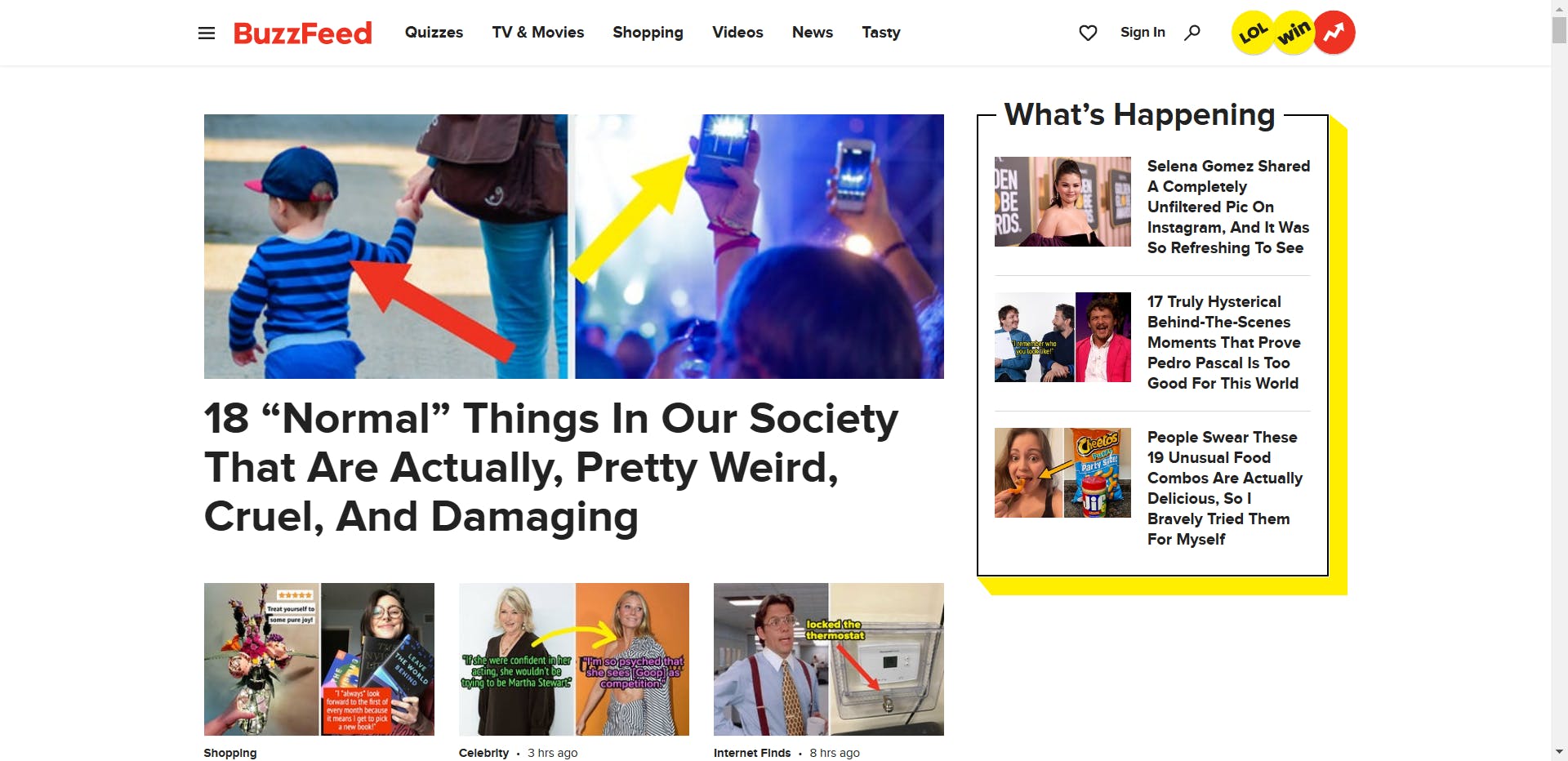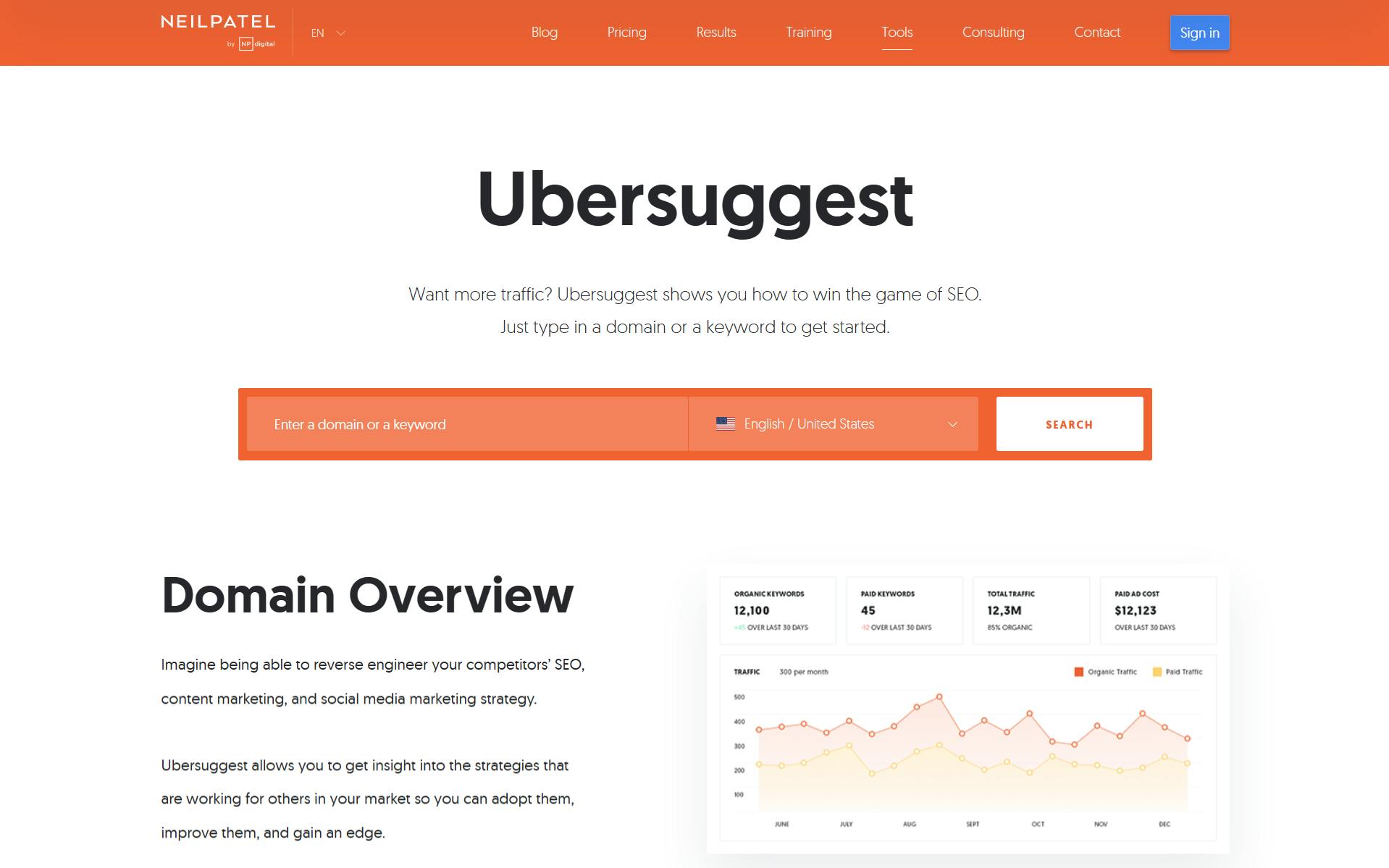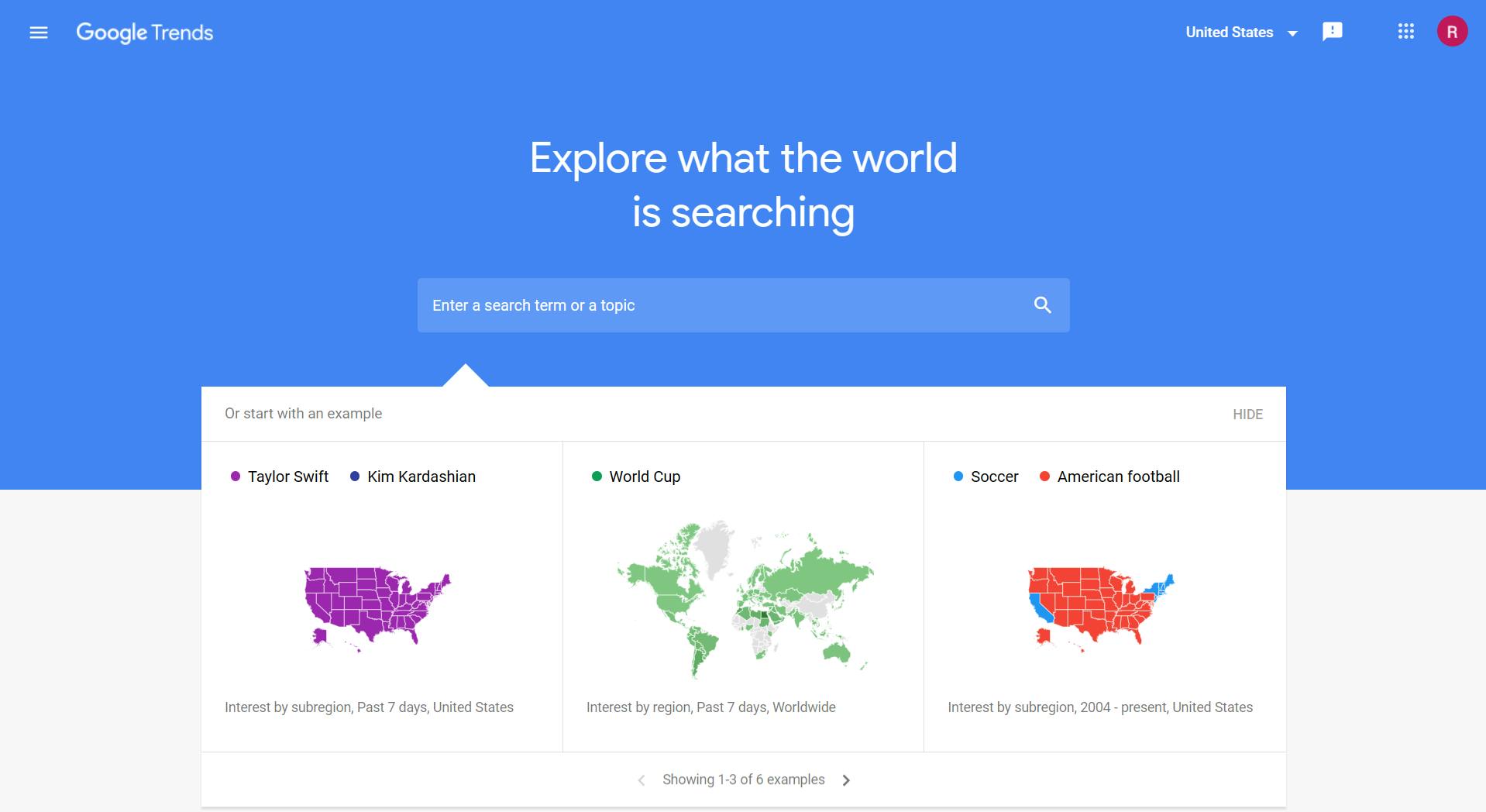Everyone loves a good listicle—those easy-to-digest chunks of information that provide bite-sized snippets of knowledge. When the average time readers spend on a blog post is 37 seconds, a list article is perfect for people with short attention spans. And if it's a good listicle, it can hook the readers for more than 37 seconds.
But the challenge lies in creating an informative and entertaining listicle that readers will enjoy. From selecting an interesting topic to crafting an engaging headline, there are several crucial elements to consider when writing an effective listicle.
We'll outline the top tips for creating a high-quality listicle in just about any niche. You'll be able to write pretty comprehensive pieces that will make your readers return for more.
What is a listicle?
A listicle is a blog post or article that presents the content in a list format. Each list item is expanded between a few sentences and a few paragraphs.
These articles' topics and information can entertain or educate the readers. The format is easy to understand and skim, allowing the audience to absorb the information and move on quickly.
Some examples of listicle articles are "7 movies to watch in holidays" and "10 killer tips to build an SEO strategy."
For readers, listicles instantly provide clarity, structure, and focus by allowing them to quickly identify the core points made in a piece of content. Since these posts break up the usual content structure into lists, it becomes easier to digest the content.
How important are listicles in content marketing?
Content marketing is an integral part of any digital marketing strategy. It's a great way to increase website traffic and build an audience of loyal readers. Doing all these things is challenging, but there's a solution in the form of listicles.
A list post is a perfect way to create high-ranking, eye-catching content that your readers will love. The best part is that listicles can be used across nearly all niches and topics, making them an incredibly versatile tool for content marketers everywhere.
Many readers are more likely to interact with a listicle than a conventional article. In fact, studies show that listicle-style headlines can increase CTR by 70% more than non-listicle headlines. Some possible reasons are:
- The catchy titles attract readers and entice them to click on the link.
- The post structure easily breaks down a topic into segments, giving readers a quick overview of the content.
- Listicle posts are organized into easily-digestible chunks, making them easier to scan and navigate than a traditional blog post.
- Listicles follow a unique formula that is easy for readers to remember.
- The posts have a higher chance of being shared on social media, as people are more willing to share content that is easy to read.
According to another survey of 100 million headlines, listicles accounted for nine of the top twenty most shared headlines on Facebook, with 1,409 shares per article.
One successful example of listicle content marketing is Buzzfeed. Over 80% of articles on the website follow the list-type format. It attracts over 90 million monthly visitors and generates an eye-watering $200 to $500 million annual revenue.
How to write a great listicle
Have you ever wondered how professionals write amazing listicles that keep readers coming back for more? If you're new to the art of writing listicles, the task can seem intimidating at first. However, crafting an engaging piece is easier than you think.
Here are the best tips on how to write a great listicle.
Choose your listicle type
There are different types of listicles out there, and the most common is viral listicles. Popular websites like BuzzFeed and Mashable often publish articles following this format. They cover entertainment, quiz, and fun topics and rely on sensational and clever headlines.

However, an informative, in-depth listicle on any topic can go viral. Some examples could be:
- 10 content marketing strategies to double your ROI
- 12 NYC places that sell insanely cheap foods
Brainstorm ideas
A good listicle works when the author has a clear theme or topic in mind. There are many ways to discover ideas:
Keyword research
By researching your topic's most popular and relevant keywords, you can identify potential ideas for the listicle. Start by using keyword research tools such as Google Keyword Planner, Ubersuggest, or SEMrush to identify the most popular keywords related to your topic.

Look for keywords that you can use as potential listicle topics. For example, suppose you are writing a listicle about health and fitness. In that case, you might find popular keywords by searching with the terms "exercise tips" or "healthy eating habits."
You can look for these keyword modifiers:
- How to
- Top
- New
- Best
- Free, etc.
Use social media to identify trending topics related to your niche. Platforms like TikTok, Twitter, and Instagram have free resources and features for discovering the latest popular matters.
Competitor research
Look at what topics other websites and blogs have covered related to your niche. Get valuable insight into the types of listicles that are popular and successful in that field.
Browse the articles on those websites and analyze their structure and formatting. Note down everything and give your spin on the topic so your audience finds it interesting and valuable.
Make the article fit with the listicle format
When you're writing a listicle, it should follow the proper format to avoid confusion. You can follow this workflow:
- Decide on a specific topic or theme. For example, "10 proven ways to market B2B services."
- Research your topic and break it into subcategories or list items. However, a listicle about "marketing B2B services'' should not include sub-topics like "Why B2B services need marketing" or "Offline vs. online B2B marketing strategies." These subheadings will make it a traditional article.
- Outline the structure of your listicle. Start by introducing your topic, then explain the importance of each list item to provide context. There could be a conclusion to wrap up the article and encourage readers to take action.
- As you write, focus on giving valuable and actionable advice. For example, a list item on "Using social media for B2B services" could include tips on what platforms to use, creating content, and measuring success.
- Include visuals and other elements that are visually engaging. This could include graphs, videos, diagrams, images, and more.
So, ensure you're writing an article that is suitable for the format while still giving the information your readers desire.
Follow seasonality and trends
A listicle could drive more traffic if you cover seasonal and trendy topics. For instance, if you're writing a listicle about the best Halloween costumes, post it in October for maximum effect.

Similarly, the top attractions listicle of a particular destination will gain better traction in the peak travel season in that destination. A listicle about the latest fashion trends should be timed to a new launch.
Add valuable takeaways
Creating a fantastic listicle is a great way to offer helpful advice, give product recommendations, and educate readers about solutions or strategies to problems. To ensure your listicle doesn't contain any filler, focus on highlighting the most valuable takeaways from a topic.
When writing great listicles, ask yourself questions like: What are the top solutions to this problem? What key elements should I include? What do my readers want to know?
Here's an excellent example of a listicle that contains a valuable takeaway:
3 Ways to Improve Your Article Writing
- Do your research
- Note down the points that will cover the topic
- Craft everything together cohesively and compellingly
Every listicle must have a precise topic, a good structure, and an exciting list of facts. This takeaway will give the readers a quick overview of how to write an article.
Avoid clickbait titles
Creating a great listicle article can be a lot of fun, but it also requires careful planning. You might be tempted to write clickbait titles because Buzzfeed and many other websites are doing this and hitting it out of the park, right?
Don't do this because it won't work in every niche. If you want to build a brand reputation, avoid clickbait-y headlines because they are misleading. Instead of relying on sensationalism, write thought-provoking and to-the-point headlines that accurately reflect the article's topic.
Having an accurate title also builds trust with readers and encourages them to share your content.
For example, avoid titles like the following:
- 20 proofs that aliens visited humans
- 13 tips to overcome any problem
- 20 interesting recipes to convert your wife to veganism
These titles are unrealistic. They may trigger curiosity but won't provide a clear benefit to the reader. Instead, use headlines that clearly state why you wrote the listicle: to teach your audience something or entertain them.
Some examples of good titles are:
- 10 nighttime habits to have a good sleep backed by research
- 7 case studies prove that good content drives more traffic
These titles are simple and to the point, giving the readers a glimpse of what they can expect in the article.
Add images or GIFs to explain your points
Images and GIFs can provide a visual representation of data points, making a listicle more comprehensible and providing an easier way to consume information. Use them to break up text-heavy segments and add humor or wit to the article.
Visuals can bring the story to life, making an article more dynamic and engaging. Making good use of these elements can evoke an emotional reaction from the reader and encourage them to share the article on social media.
Use a conversational tone
A conversational tone makes content more relatable to the audience. It creates a sense of connection and engagement with the readers, encouraging them to interact rather than be passive readers.
Instead of using formal language, use words and phrases that you would use in day-to-day conversation. Avoid using jargon or technical terms that may be unfamiliar to your audience. However, some topics may require using technical words, so research before deciding on the tone.
Be consistent
Each heading and subheading in your listicle article should have a thematic tie. The list should also be coherent and organized so readers can follow it easily.
By keeping things consistent, you can tell a story in a listicle. Establishing a writing style and a formatting system that gives off a unique feeling can help readers connect with the article. Having a consistent tone of voice in writing adds an extra layer of personality, making the content more relatable to readers.
Visual consistency is also important, so stick to the same format throughout your listicle.
Use category buckets
Using category buckets makes it easier for readers to navigate the information. Category buckets are groups of items within your list that share a common theme or topic. It helps to organize the information and make it more manageable for the reader.
For example, if you're writing a listicle about "50 tips for a successful career," you could group the tips into categories such as "Networking," "Communication," and "Time management."
Organizing similar information under particular categories makes a listicle more visually appealing. It'll also give your article a more professional look and feel.
Use numbering or bullet points
Numbering your items is a simple but effective way to organize your list and make it easy for readers to follow along. It also helps to break up the text and make the article more visually appealing.
When numbering your items, make sure to use clear and consistent formatting. For example, you can use bullet points, numbers, or letters to distinguish each item. You can also use different colors, font sizes, or styles to make the numbers stand out.
The experienced writers at Strategically know how to use proper format besides writing great content. Try our service if you're struggling with your content writing and marketing.
Give a few examples
When writing a listicle, it's important to give a good example to help illustrate your points and make them more relatable to your readers.
For example, if you're writing an article about time management tips, mention a technique you have used to increase your productivity.
More specifically, this article you're reading is the perfect instance. We've provided tons of examples where it was necessary.
Giving examples helps make your listicle more engaging. These allow the readers to understand how they can implement the techniques in real life.
Include informative links
Including informative links in your listicle can add credibility and authority to your content and provide your readers with additional resources to explore. These links can be to other articles, blog posts, or research studies that support your points.
When adding links, choose high-authority sources to ensure the accuracy and reliability of the information. Also, use anchor texts that accurately describe the link's content.
This not only helps the readers to understand the context but also improves the SEO score of your article. Always check the link before publishing to ensure they're still active and take your readers to the correct page.
Give context
When writing a listicle, give context to the information you're presenting. You can provide background information on the topic and explain why it's necessary or relevant to your readers.
Context helps readers understand the content's significance and how it relates to their lives.
Suppose you're writing a listicle on the best ways to save money. Then, provide context by explaining the current economic climate and how many people are struggling with financial issues. In this way, readers will understand why your tips are essential and how they can benefit from these suggestions.
Additionally, providing context can increase your listicle's credibility by showing that you have researched and know about the topic properly.
Add a summary
Adding a summary at the end of your listicle is a great way to wrap up the main points and leave a lasting impression on the reader.
However, after Google's helpful content update, many marketers are now adding this summary at the beginning of the article. It's useful since readers will immediately know about the content's topics.
The summary should concisely recap the main points covered in the listicle. It's a great way to drive home the listicle's primary message and provide the reader with a quick reference for the key takeaways.
Use facts, statistics, and expert quotes
Referring to facts and statistics builds trust with your readers, besides backing up your claims. It also makes your content more informative and engaging.
Suppose you write something like, "listicles get 80% more clicks than conventional articles," and link to a credible source. It'll gain the readers' trust more than a claim without supporting evidence.
When including statistics, make sure they are accurate and from reputable sources. Remember to cite the sources when using expert quotes.
Ask questions
Asking questions will incite your readers' curiosity. They work like a charm for grabbing attention, especially when the answer is surprising. They will give your readers an incentive to continue reading, giving your article more engagement and views.
Questions also make the article more approachable and conversational. They encourage the reader to think, creating an interactive experience for them. You can use a question at the end of the article to draw readers in for more. They are more likely to respond to the call to action when there is a question.
When crafting questions, try to come up with unique perspectives your readers may not have considered. It has a high chance of increasing audience engagement.
Apply a unique take
With so much content available online, readers are looking for something new and fresh that they haven't seen before. People appreciate something outside the norm that makes them think in a new light. Therefore, conduct thorough research to gather new insights and perspectives on the topic.
Unique takes on a topic could involve an unusual angle, a creative presentation, or incorporating surprising facts or information. These elements will create an exciting read and can be used to draw in readers who may not have considered the subject otherwise.
For example, a listicle about a city's best restaurants could be presented through a unique lens, such as through the eyes of a fictional character eating in these places. What would Anton Ego from Ratatouille say about these dishes?

Image Credit: Disney Fandom Wiki
By getting creative and presenting the topic from an unexpected angle, you can show your individuality and capture the attention of a wider audience.
Update your listicles regularly
As our world changes, so too should the content of a listicle; content that is months or even years old runs the risk of being outdated and losing relevance. This is especially important if the topic of your listicle is time-sensitive or ever-changing, such as SEO practices or trends in fashion or technology.
Also, updating a listicle helps to keep it relevant for search engines. Search engines evaluate content quality, relevance, and freshness, and regular updates can improve these qualities. An outdated listicle can lead to poor search results, potentially leading to lower click-through rates and decreased website traffic.
Monitor the engagement and feedback
You can gain insight into how your audience responds to your content by tracking metrics such as views, shares, and comments. Analyze the data to see which list posts resonate with readers and which are falling flat.
Use this information to adjust your future listicles, such as tweaking the headlines, adding more visuals, or including more expert quotes.
Additionally, pay attention to the comments section, if any, as it's a great place to understand what readers liked or didn't like about the content and if they are looking for more information.
Conclusion
Writing a great listicle requires careful planning and attention to detail. You can create engaging list posts by choosing an interesting topic, using a catchy headline, and adding visual elements. Additionally, facts, statistics, and expert quotes can add credibility to your listicle.
Are you still wondering how to write a great listicle and use it to drive audience engagement? We can help. Strategically offers expert content writing services, creating high-quality listicles on any niche for more traffic and better conversions.
